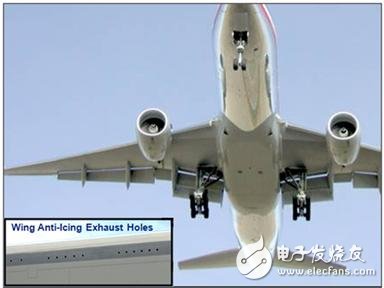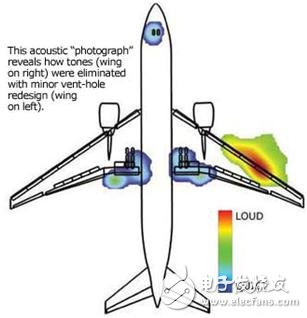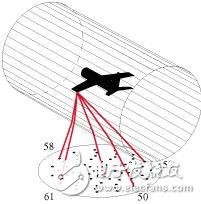In recent years, with the emphasis on human environmental noise, the developed countries in the world have formulated noise standards for the take-off and landing of civil aircraft. Due to its excellent noise performance, the Boeing 777 launched in the mid-1990s became the first choice for many long-haul routes. Although Boeing 777, which entered the international aviation market in 1995, has reached all design goals, it was soon discovered that it often emits a whistling whistle during take-off and landing, and the frequency of howling is quickly measured at around 2000 Hz. However, Boeing engineers have been unable to determine where the howling is coming from? In addition to the huge engine in flight, the vibration of other various components on the aircraft and the friction between the fuselage and the air will generate noise. It is difficult to decompose such a complicated noise source from a high-speed flying object. And know. Boeing engineers reluctantly called this whistle "2000-hertz mystery tone".

Figure 1. The front edge of the Boeing 777 main wing has a row of small holes. In cold environments, the airflow through the aperture will be heated and then circulated inside the wing to prevent moisture from freezing on the wing (from "Commercial AviaTIon and the Environment", Boeing, 2005)
Six years later, in the fall of 2001, Boeing researchers extended the principle of smart antennas, which are widely used in wireless communications, to audio, using hundreds of microphones to record a 150-foot spiral microphone array on the runway of the airport. The noise from the Boeing 777 flying over the sky. The results of trial and error showed that the 2000 Hz whistle came from the front of the two wings. The front edge of the Boeing 777 main wing has a row of small holes (see Figure 1). In cold environments, the airflow through the holes will be heated and then circulated inside the wing to prevent moisture from freezing on the wing. Based on the results of the microphone array detection and the analysis of the wing structure, Boeing researchers suspect that the "culprits" of the mysterious howling are the two rows of small holes. When the oncoming airflow passes through the shape and the neatly arranged holes, as if people are playing the flute, the airflow and the wing produce a resonance of 2000 Hz. To confirm this speculation, the acoustic expert Rob Stoker convinced the Boeing department to tape all the holes in the leading edge of the wing and then compare the noise levels at the leading edges of the two wings.

Figure 2. The whistle of 2000 Hz after the small hole on the front of one wing is almost completely removed (from "Sound camera' silences a mystery", Boeing FronTIers, March 2004, Volume 02, Issue 10)
Figure 2 shows the test results after sealing one side of the small hole. As Stek predicted, the whistle of 2000 Hz after the small hole on the front of one wing was completely eliminated. Boeing engineers have finally solved the fans who have been plaguing them for many years! Based on the results of the microphone array detection, Boeing's designers redesigned the shape and arrangement of the anti-freezing holes on the leading edge of the wing. The improved Boeing 777-300ER series completely eliminated the "mysterious two thousand weeks" whistle.

Figure 3. Mr. Stoke, Boeing Acoustic Expert, excited after success
The story of the successful application of microphone arrays on Boeing aircraft was quickly circulated to Airbus Europe and other aircraft manufacturing companies around the world. Today, microphone arrays are used not only to study noise sources in aircraft and automobiles, but also in noise research in industries such as submarines, buildings and home appliances.
The following article will briefly introduce the principle, application examples and some common problems in the application of the microphone array. In order to allow non-professional readers to understand this emerging technology as completely as possible, this article will try to avoid using professional vocabulary and mathematical formulas, so some assumptions may appear too ideal, and some explanations may seem too simple.
Detection principle : Figure 4 is a schematic diagram of Boeing's test. The black dots inside the circle represent the microphone. The red line represents the path of the sound wave from the sound source s(t) to the microphone. Since the distance between the sound source and each microphone is not equal, the sound waves received by each microphone have different delays TI (called phase difference in the frequency domain), which can be roughly described as xi(t) = s(t- TI)+Ni(t), where xi(t) and Ni(t) represent the signal received by the ith microphone and the interference with a mean of zero, respectively. Since the structure of the microphone array and the propagation speed of the sound are known, we can solve a set of corresponding delays {ti} using the triangle and geometric knowledge of the middle school for the sound source at each position of the space. If the signal xi(t) received by each microphone is compensated separately for ti (ie xi(t+ti)), the sound waves from the sound source are aligned, and then all M compensated signals xi(t+ti) are taken. Adding, finally, the acoustic wave Ms(t) enhanced by the interference tending to zero (because the mean of the interference Ni(t) is zero) is obtained.

Figure 4. Boeing test schematic
Flashing led module for pop display
Flashing Led Module, Led Display Flasher, Led Flash Modules
AST Industry Co.,LTD , https://www.astsoundchip.com